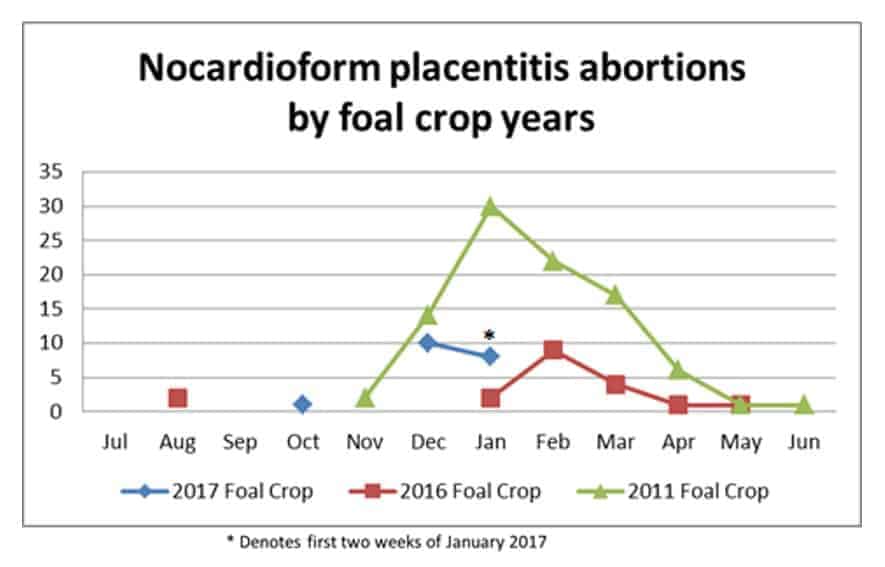Nocardioform Placentitis Concerns for Kentucky Foal Crop
The UKVDL saw 10 nocardioform placentitis abortions in December 2016 and eight in the first two weeks of January.
- Topics: Abortion and Embryonic Death, Article, Foal Care, Mare Care, Placentitis
Share
ADVERTISEMENT

Photo: University of Kentucky's College of Agriculture
However, the UKVDL has seen an increase in confirmed nocardioform placentitis cases in the 2017 foal crop, starting with 10 abortions in December 2016 compared to zero abortions in December 2015. In the first two weeks of January 2017, the UKVDL has already had confirmed eight nocardioform placentitis abortions, with more pending.
Nocardioform placentitis testing is available at UKVDL
Create a free account with TheHorse.com to view this content.
TheHorse.com is home to thousands of free articles about horse health care. In order to access some of our exclusive free content, you must be signed into TheHorse.com.
Start your free account today!
Already have an account?
and continue reading.
Share
Written by:
University of Kentucky College of Agriculture, Food and Environment
Related Articles
Stay on top of the most recent Horse Health news with















